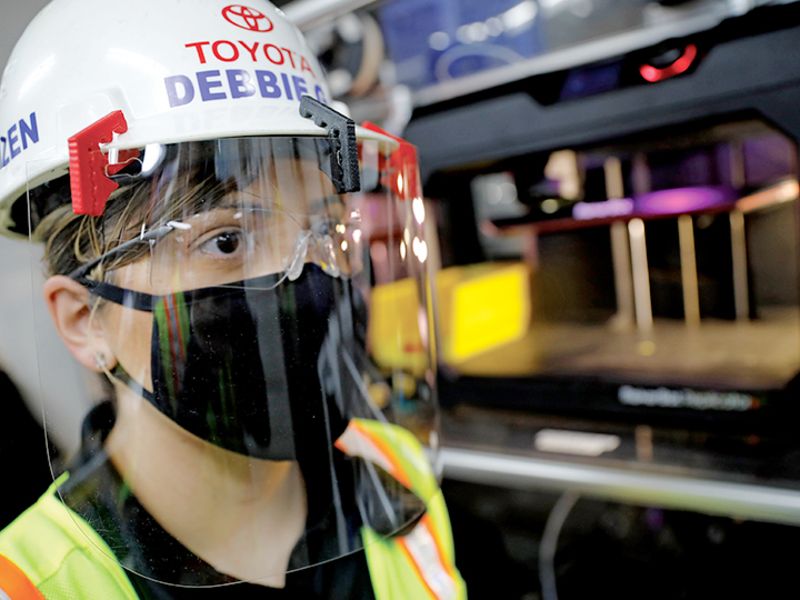
Toyota’s massive truck plant near San Antonio had a one-week head start on its Detroit 3 competitors when its workers returned to their jobs May 11, but that didn’t translate into an extra week’s worth of new Toyota Tundras and Tacomas.
In fact, the plant didn’t produce a single vehicle for three days.
After meticulous preparations and the retraining of 3,000 workers and supervisors to do their jobs within new social distancing protocols after a seven-week shutdown, the plant built just five pickups May 14 and 10 the next day, said Kevin Voelkel, president of Toyota Motor Manufacturing Texas.
“It’s not about building trucks; it’s about building trust. And if I can build trust, then building trucks is easy,” Voelkel told Automotive News last week.
Toyota had planned a slow start to retrain its workers after shutting down all 14 of its active assembly and parts plants across North America on March 23 because of the COVID-19 threat, but Tacoma and Tundra inventories were already pinched after the automaker had a better-than-expected end of April, head of sales Bob Carter said. Voelkel said production had grown to about 1,300 vehicles last week, and the plant planned to run two full shifts again beginning June 15.
Plant workers were allowed to bring their own masks, or they could use company-provided ones. The assembly line wasn’t slowed, Voelkel said, but workers who had to be within 6 feet of one another to do any part of their jobs had to wear plastic face shields in addition to the masks. The number of per-shift job rotations was reduced, and Toyota allowed six minutes at the start and end of each rotation for workers to sanitize their workstations, Voelkel explained. Maintenance crews devised a rolling plastic screen that could be put between two people to allow them to inspect or perform maintenance on the same piece of equipment, Voelkel said.
Toyota also removed the air circulation fans that cooled workers in certain areas on the line, a fact that could come into play as summer begins to swelter. But Voelkel said his employees were accustomed to the heat and that chillers in the plant should be able to keep up as temperatures rise.
Asked whether some workers had been too fearful to come back, Voelkel said attendance was actually better than before the shutdown. “I’m still shocked, along with all of my counterparts” at other Toyota plants in North America. “I think this is a difference between [the Great Recession] and the pandemic because … coming back to work is a place where you can get some actual social interaction after the quarantine. Maybe it’s being able to get back and see your friends. I think many are just appreciative to be back and be paid and be out of the house.”